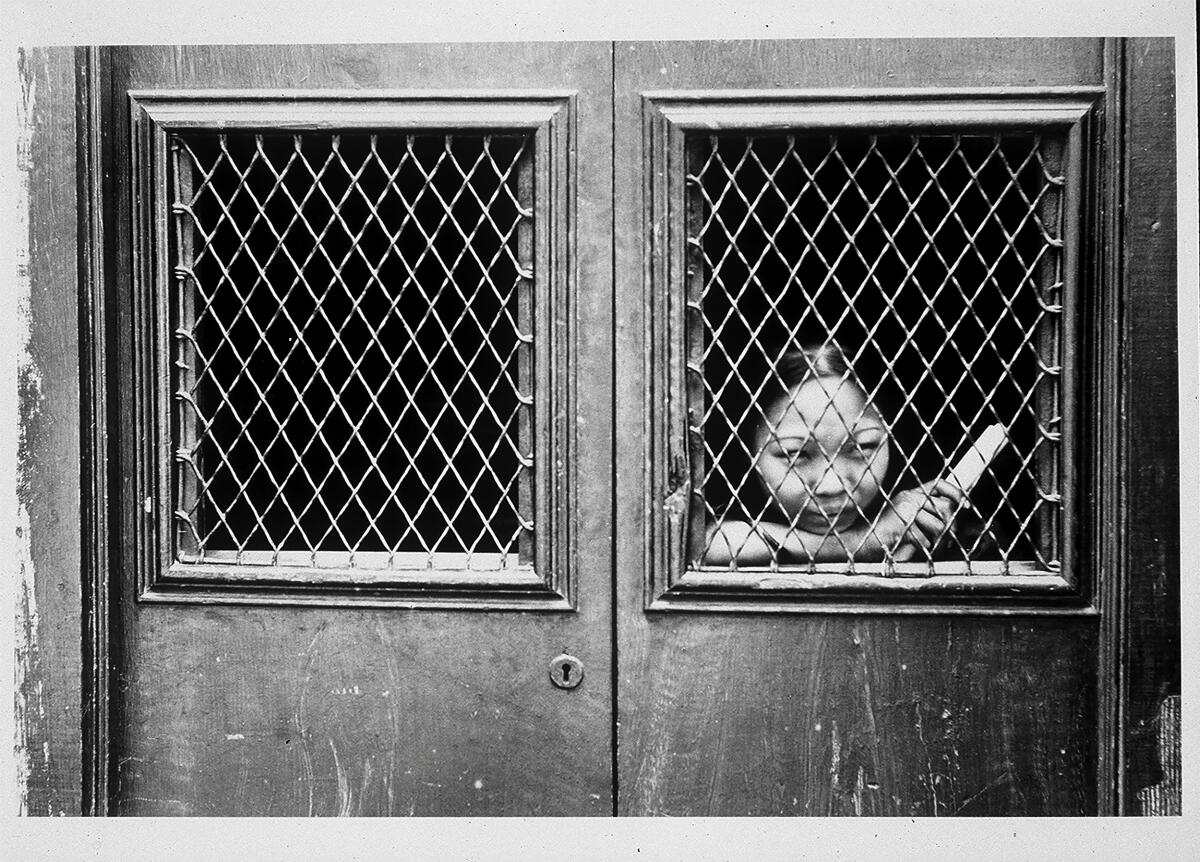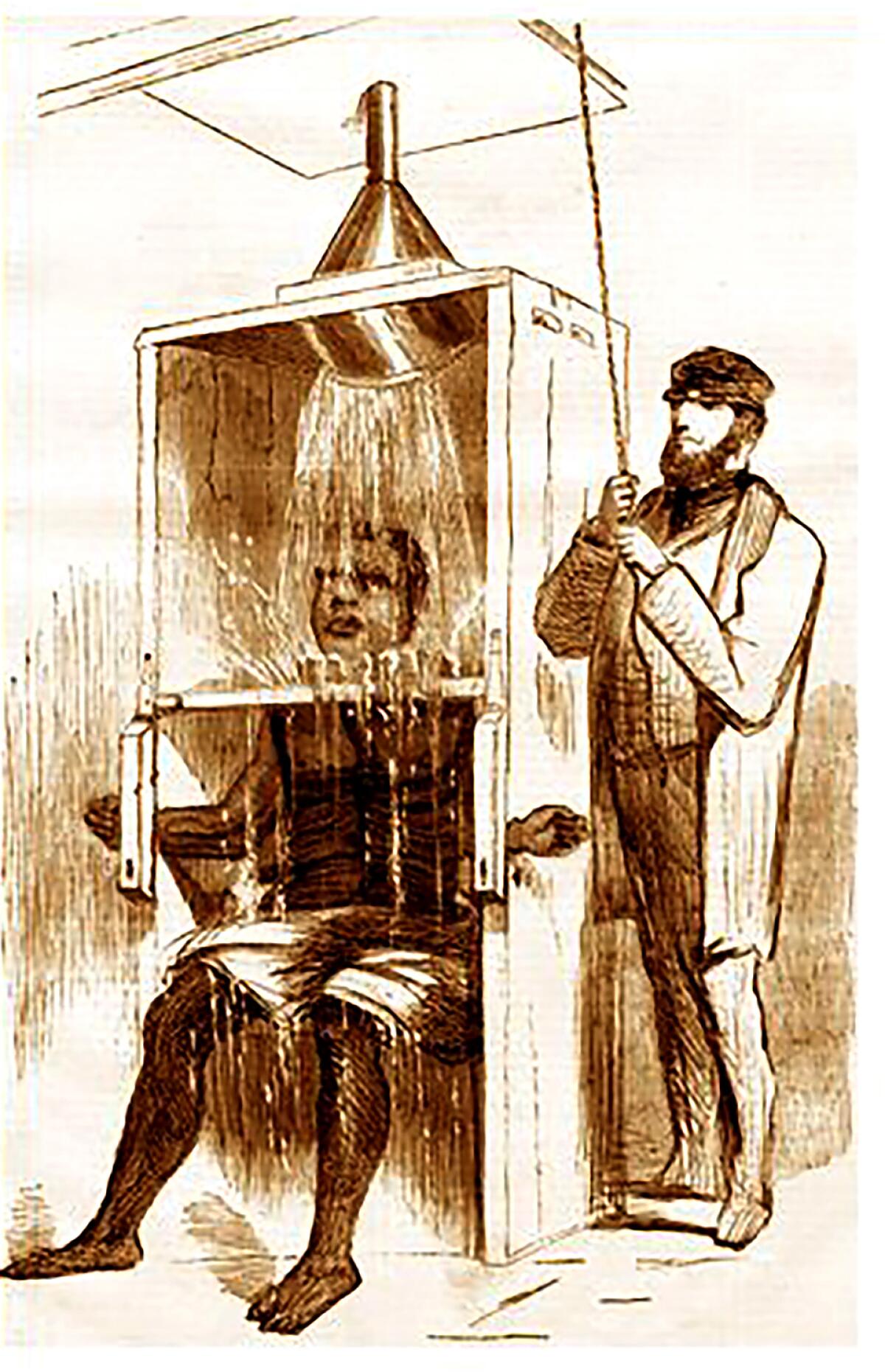Sign up for our Book Club newsletter
Get the latest news, events and more from the Los Angeles Times Book Club, and help us get L.A. reading and talking.
You may occasionally receive promotional content from the Los Angeles Times.

On the Shelf
California, a Slave State
By Jean Pfaelzer
Yale: 520 pages, $35
If you buy books linked on our site, The Times may earn a commission from Bookshop.org, whose fees support independent bookstores.
Jean Pfaelzer thought she knew what injustice looked like. A longtime professor of American studies at the University of Delaware, the L.A. native forged her political consciousness at UC Berkeley in the ’60s, joined civil rights and justice access movements and wrote several works of history including 2007’s “Driven Out: The Forgotten War Against Chinese Americans.”
But it wasn’t until she was researching that book that Pfaelzer began glimpsing another neglected history. Studying a photograph of a young Chinese woman shackled in a brothel in San Francisco in the 1870s, she was struck by the fact that this kind of slavery existed at all. “I kept looking at the picture of the Chinese girl, thinking, ‘What happened to the 13th amendment?’” Pfaelzer, who lives part-time in Humboldt County, says during a phone interview. “How could this be happening?”
“A Dangerous Business,” the latest novel by Pulitzer Prize winner Jane Smiley, follows a brothel worker in Monterey investigating disappearances.
Some years later that image, and those questions, came flooding back when she read a newspaper story about a 15-year-old who had escaped from forced labor on a marijuana farm in Northern California, where she had been kept in a box and abused with a cattle prod. Pfaelzer’s creeping epiphany became a full-blown thesis: California, cemented in the American mind since at least the Civil War as the beacon of freedom and opportunity, was — and remains — a slave state. “It’s not like I didn’t really know,” she says. “But I didn’t know this.”

In the introduction of her new book, “California, A Slave State,” Pfaelzer expands on the revelation: “How could I have not noticed that this was happening in a state that I thought I knew so well? The history of slavery in California is right beneath the surface of what we thought we knew.”
“Slave State” is a devastatingly detailed, urgent and somewhat regretful confirmation of an inconvenient truth: Far from being the place where everyone got an equal chance, California embraced slavery from the outset and used it to become the most prosperous state in the union. That boosterish tale of California’s endless possibility turns out to have been built with sweat, oppression, coercion and genocide. It was precisely California’s openness, Pfaelzer posits, that allowed greed, cruelty and hypocrisy to run amok, and it is this bitter irony — not the orange groves or Mediterranean climate — that makes us (that fraught word) exceptional.
This is the story of California not as a free state but as a land of proliferating startup businesses, accelerated by the Gold Rush of the 1840s but by no means starting there. Wave after wave of resource extractions — by the Russians, the Spanish, the Americans — required quick and ready labor, which meant plundering and exploiting human beings so that they may plunder and exploit the environment in the name of profit and dominance. “As such,” Pfaelzer writes, “this is an American story.”
The 14 most essential works of nonfiction include histories by Kevin Starr, Carey McWilliams, Reyner Banham and, ruling them all, Mike Davis’ ‘City of Quartz.’
Pfaelzer’s own story is also American, albeit in a traditionally positive sense. Her father was a small-business owner who ran a “tiny” jewelry store in Santa Monica, which prospered when California’s population swelled during World War II and the Great Migration. “Men were shipping out and buying stuff,” Pfaelzer says. “That store put me and my siblings through UC Berkeley.”
My own American story helped shape what I too thought about California — at least until I read Pfaelzer’s book. My parents came to L.A. from New Orleans, fleeing the South and the ravages of racism along with scores of relatives. I like to say I’m fortunate to have landed in California. Not that it was some perfect place, but it was golden for all the places it was not: the corrupted South, the intractable ghettos of the north, the hidebound East coast. California was pliable, not another American place that bent you, but a place you could bend to fit your own idea of a created, intentional life.
In the hands of the powerful, that pliability has had harsh consequences for centuries. In the 1700s, fortune-seeking Russians forcibly enlisted Native Alaskans in the wholesale slaughter of the diminutive sea otters, prized for their fur. “For thousands of years, no species of animals had ever become extinct in the North Pacific,” Pfaelzer writes, in a voice both damning and poetic. “But in the first fifty years of conquest, the Russians slaughtered over ninety-six thousand sea otters, four hundred thousand seals, and over one hundred thousand foxes, decimating species and Native people whose souls traveled between people and gods, animals, and spirits.”

A key revelation for Pfaelzer is that California, admitted to the union as a free state in 1850, adopted a constitution that claimed it would never “tolerate” slavery — a legally hazy term that allowed the institution to survive and evolve in a state vested in remaining white. After Congress passed the Fugitive Slave Act, California followed suit with a state Supreme Court decision in 1852, ruling that Black slaves brought in pre-statehood were primarily property. That precedent bolstered the Supreme Court’s infamous Dred Scott ruling of 1857.
“The unique thing is that California was almost like a border state,” says Pfaelzer. “Free Blacks met enslaved Blacks, and neither one knew the other was going to be there.” Yet many Black people felt entitled to the same prosperity and independence as everyone else — a uniquely California view. This led to the state’s first civil rights movement, focused on securing legal protections.
At a time when the GOP is trying to erase Black history, Jefferson Boulevard now highlights a history that has long shaped this city and its people.
But even this struggle was just the beginning. In the chapter “Except as a Punishment for Crime” — named for the exception to emancipation embedded in the 13th Amendment — Pfaelzer lays out the way California virtually invented the prison industrial complex. In her framing, prison was yet another startup business in a state that in the 1800s still largely lacked institutions and infrastructure.

The first state penitentiary in San Quentin was conceived by an enterprising former slave owner who worked (corruptly) with the state legislature to cultivate another class of free labor with convicts, many of whom were nonwhites serving time for minor offenses such as vagrancy.
Slavery also continued in the form of exploiting immigrants, notably the Chinese. Many Americans know they were brought in as railroad workers, and that their presence fueled white antipathy that culminated in the Chinese Exclusion Act of 1882. What’s not as widely understood is that Chinese women were imported and enslaved as prostitutes; human and sex trafficking, prefigured by the widespread rape of Native women and the sale of Native people, was the last “empire” officially established in California.
Though many of these systems are still in place, Pfaelzer says she remains “a card-carrying optimist,” adding, “I don’t want people to read this as a chronicle of despair.” Long steeped in the politics of hope, she can’t help but be inspired by all the forms of resistance at the narrative core of “Slave State.”
California’s Reparations Task Force is concluding a two-year process to study and gather evidence about the harms of slavery and to recommend reparations to the state Legislature.
“I kept thinking about all the ways enslaved people survived, how they kept traditions,” she says. And California manages occasionally to live up to its progressive image: It is the first state to form a commission to study reparations for Black people.

But it’s the stories of resistance that keep Pfaelzer optimistic. There was, for instance, Charlotte Brown, the San Francisco woman who helped open up public transportation a hundred years before Rosa Parks. “On a torn piece of paper, her father wrote, ‘Bought two tickets for Charlotte to ride the train again,’” Pfaelzer says. “In addition to this being an important historical story, it’s documenting a powerful father-daughter story.” This one moved the author to tears. Right alongside the dark story of slavery was one final epiphany for Pfaelzer; California’s long history of a determination to be free “was sitting right below the surface, once I started looking,” she says. “It was waiting to be found.”
Kaplan is an L.A.-based journalist and contributing writer to Opinion.
Sign up for our Book Club newsletter
Get the latest news, events and more from the Los Angeles Times Book Club, and help us get L.A. reading and talking.
You may occasionally receive promotional content from the Los Angeles Times.